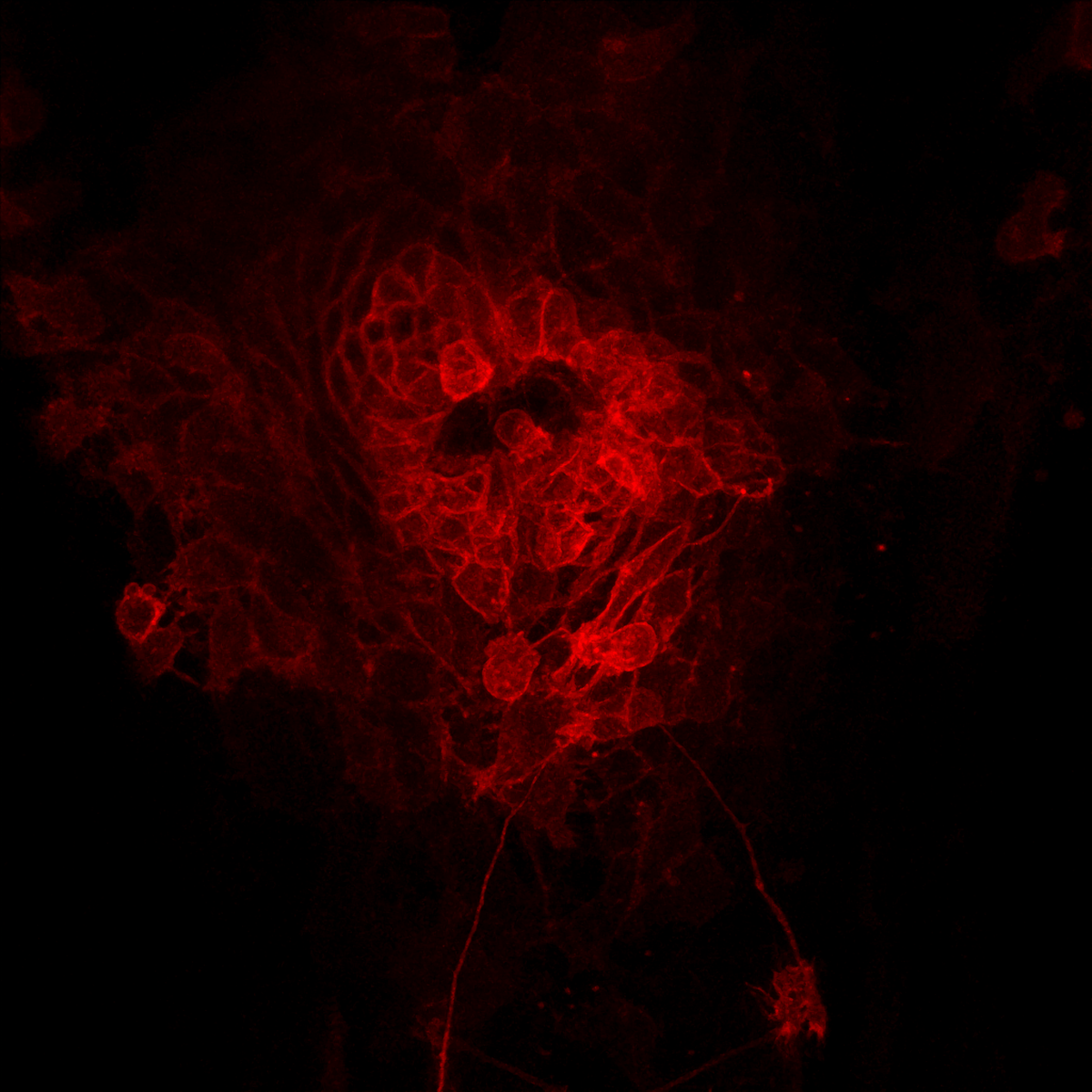ABOVE: Researchers at Harvard University captured the very first heartbeat in a developing zebrafish embryo. © iStock, Hase-Hoch-2
For thousands of years, the question of how the heart first beats has captured the imagination and curiosity of philosophers and scientists alike. This question motivated a team of researchers at Harvard University to capture and characterize the very first heartbeat. They published their findings today (September 27) in Nature.1
Specifically, the researchers wanted to understand how a large group of cells works together to orchestrate a complex, tissue-wide activity like the first heartbeat. “The way most people have thought about cell communication is based on secreting proteins and proteins that fuse along and let cells talk to each other,” said Sean Megason, a systems biologist at Harvard Medical School and coauthor of the paper. But changes in gene expression are relatively slow, suggesting that electrical communication might better explain the heart’s rapid transition from quiescence to beating.

Previous studies on heart development provided either static snapshots over time or required invasive electrophysiological recordings with limited spatiotemporal resolution and sample size. To monitor the spatiotemporal organization of the heart in real time, the researchers turned to the humble zebrafish. Zebrafish fertilize their eggs externally and rapidly develop transparent embryos that provide a unique porthole into developing systems.2
To capture the once-in-a-lifetime event of the first heartbeat, the researchers injected an mRNA encoding a fluorescent calcium indicator into the zebrafish embryo immediately following fertilization and mounted a fluorescence microscope above the region of the developing heart to continuously monitor calcium activity. This noninvasive approach allowed the researchers to collect live, in vivo activity at a rate of many times per second for a period of hours. “When we did that, we saw something surprising,” said Megason.
See also “The Circadian Rhythm of the Heart”
Rather than individual cells gradually coming online, the researchers found that the cells suddenly go from silent to fairly regular beating. “All of a sudden you see this big flash,” said Bill Jia, a graduate student at Harvard University and coauthor of the study. “It was really incredible.”
The abrupt transition from silence to tissue-wide activity intrigued the research team. “It's almost like you have to get a bunch of people to march in sync without them ever having walked before,” said Megason. To characterize the observed activity, the researchers sought the help of mathematical models.
Mathematical models provide a universal way of describing a small number of possible behaviors, or phase transitions, in a biological system. Given the step change from silent to oscillatory calcium activity, the researchers broadly classified the transition as a bifurcation event. After comparing their results to simulated models, they landed on one specific kind of bifurcation that accurately captured the observed frequency, amplitude, and pattern of activity: saddle-node on invariant circle (SNIC) bifurcation. “This conceptual approach of thinking about bifurcations in the state of a system of cells is perhaps a useful way to think about other groups of cells and other organs,” said Megason.
The SNIC bifurcation model predicted that the spontaneous emergence of calcium activity, which the researchers consider the first heartbeat, resulted from excitable cells crossing a threshold and initiating an activity cascade in other nearby cells to propagate the signal. To test this hypothesis, the research team developed a transgenic zebrafish line that coexpressed fluorescent calcium and voltage indicators in the early heart. They observed that an increase in electrical activity narrowly preceded an increase in calcium activity, suggesting that electrical changes in membrane potential drive the first heartbeats.
See also “Mapping Out What Makes the Heart Tick”
In further support of this, genetically engineered zebrafish lacking the voltage-gated calcium channel Cav1.2 did not exhibit electrical changes in membrane potential or increases in calcium activity, suggesting that Cav1.2 drives the first few beats, and that voltage and calcium are coupled.
Another prediction of the SNIC bifurcation model was that cells are increasingly easy to excite the closer they are to crossing the threshold. To test this, the researchers combined calcium recordings with optogenetic tools that allowed them to stimulate changes in membrane potential by shining blue light on the cells.3 “Live imaging and optogenetic perturbation are really powerful to study development, which is essentially just about correlations in space and time,” said Jia. The researchers knew that the first spontaneous heartbeats occurred around 20 hours postfertilization, so they applied periodic pulses of blue light leading up to this period. They found that the heart quickly transitioned to being excitable, or highly responsive to incoming electrical signals, around 90 minutes before the first spontaneous heartbeat.

The wide footprint of calcium activity observed with the first heartbeat led the researchers to characterize the nature of cell coupling in the region. In adult hearts, genetically-encoded pacemaker cells set the rhythm of the heart. However, in the developing heart, the researchers found that the location of the cells orchestrating the first heartbeat varied between embryos and, if they optogenetically silenced these cells, the area of the heart that initiated activity changed location for subsequent heartbeats. These findings suggest that pacemaker cells are not genetically specified at this stage.
Key to these experiments performed in the paper were custom imaging platforms built by coauthor Adam Cohen, a biophysicist at Harvard University. When used alongside high-throughput approaches developed by Megason, they enabled functional multiplexed imaging of fluorescent calcium and voltage indicators alongside optogenetic stimulation. “This let us look at things in a way that had never been looked at before,” said Megason.
See also “The Heart Can Directly Influence Our Emotions”
“It was a very elegant use of the zebrafish model to explore a very interesting question in cardiac biology with broad ramifications,” said Didier Stainier, a developmental geneticist at the Max Planck Institute who was not involved in the study. “It's [Megason] and [Cohen] coming together with their respective strengths, and it's a true interdisciplinary work.”
The researchers next plan to understand the establishment of the pacemaker cells. “How [do] these cells that constitute the pacemaker become the orchestrators?” said Stainier. Although it's a little noisy at first, cells in the developing heart adopt an approach that lets them learn on the job and eventually find their rhythms. “One nice thing about looking at embryos is you can watch this system get built,” said Megason. From there, scientists can employ methods for manipulating physiological function to study the various layers of regulation that are built on top of that system. “By understanding the core mechanism at play, it's easier to understand how these other layers of regulation control that and then perhaps, what goes wrong as animals age,” said Megason.
- Jia BZ, et al. A bioelectrical phase transition patterns the first vertebrate heartbeats. Nature. 2023.
- Staudt D, Stainier D. Uncovering the molecular and cellular mechanisms of heart development using the zebrafish. Annu Rev Genet. 2012;46:397-418.
- Entcheva E, Kay MW. Cardiac optogenetics: A decade of enlightenment. Nat Rev Cardiol. 2021;18(5):349-367.


